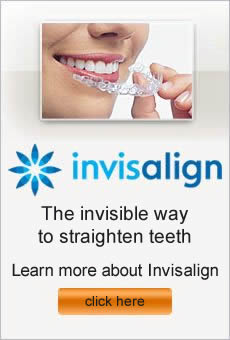The American Association of Orthodontists (AAO) recommends that children receive an evaluation around age seven. Not all children will need early treatment, but it’s important to have an orthodontist see how things are developing. Certain problems are easier to correct at an early age, so this initial assessment helps set your child on the right path. As well, your orthodontist can assess your child’s development and make sure everything continues on the right track.
Around age seven, your child’s first molars appear, which solidifies the back bite. At this time, the orthodontist can see how the various teeth are in relation to the others, looking for issues such as overbites, crowding, or crossbites. Without correction, orthodontic problems can result in uneven tooth wear, speech impediments, and greater risk of decay or gum disease.
For some children, it’s particularly important to schedule an early evaluation. If you notice the following problems, contact the office of Mehdi Fotovat for an appointment:
• Breathing through the mouth
• Clenching or grinding
• Crowding
• Difficulties with speech
• Extended use of a pacifier
• Spacing problems
• Thumbsucking beyond preschool
Bringing your child to the orthodontist for an early assessment means addressing these issues, or others like them, before they create additional problems. Early treatment can make room for permanent teeth that still need to erupt and also lessen the time needed in braces at a later point. Often, therapy is most successful when treatment is performed while the jaws and face are still growing.
Schedule a Visit to our Sherman Oaks orthodontic practice and see how we can enhance your smile. Mehdi Fotovat
Oral hygiene is always important, but when you have braces, it’s even more critical. Because food can easily get trapped between braces, you may be more prone to gum irritation, bad breath, teeth discoloration, and cavities. Following these tips will help keep your mouth healthy during orthodontic treatment:
• Take it tooth-by-tooth. Make sure you really concentrate on every tooth, spending at least 10 seconds on each one.
• Angles matter. Position your brush so that it’s angled down toward the area where the tops of your teeth and braces meet. When you brush the bottoms of your teeth and braces, angle the brush upward.
• Cover the whole area. Most people remember to brush the front of their teeth, but may neglect the chewing surfaces or tongue-side of teeth.
• Do the two-step. During orthodontic treatment, you need to brush right after meals. The longer food stays trapped in your braces, the greater risk for plaque formation and tooth decay.
• Plan ahead. Carrying a toothbrush and toothpaste with you will make it easier for you to brush any time you finish eating.
• Pieces and parts. If you have head gear or rubber bands, remove these items before you brush.
• Think fluoride. Preventing cavities during treatment is critical, so choose fluoride toothpaste; a fluoride mouthwash wouldn’t hurt.
• Don’t forget the floss. Though flossing is more difficult with braces, you need to make the extra effort. Some people have no trouble with regular floss, but products like floss threaders can make it easier for you to reach under the wires and get the job done.
• See your dentist. You need to perform home oral care, but professional cleanings will help keep your teeth and gums healthy, so don’t skip your regular appointment.
Keeping your smile beautiful and healthy at our Sherman Oaks, CA orthodontic practice – Mehdi Fotovat, DDS.
In recent years, more kids and adults are wearing braces. Research indicates that 70 percent of the population could benefit from orthodontic treatment. Based on fossil findings, our ancestors had little trouble with alignment of their teeth, so what happened to us? As different ethnic and genetic populations began to merge, human growth pattern in the mouth didn’t accommodate teeth and jaw development.
Often, children inherit the need for orthodontic from one or both parents whose teeth didn’t align correctly, just as you inherit eye color or seasonal allergies. These tendencies can be passed down from generation to generation. Consequently, your child’s teeth may be too large or too small for the jaw area, resulting in crowding or extra spaces.
With modern orthodontic treatment, your orthodontist can correct alignment and spacing problems. Generally, it’s a good idea to bring your child in for an orthodontic evaluation around age seven. At this time, the orthodontist can assess your child’s current and future development to determine if any intervention is necessary. Some children require Phase I, or early orthodontic treatment, to prepare their mouths for Phase 2, the straight-forward phase of treatment that usually involves traditional braces.
If you would like a straighter smile, but never made steps to change it, there’s still time. Even adults can benefit from orthodontic treatment. With modern alternatives like Invisalign clear aligners or ceramic braces, you can achieve a picture-perfect smile without the hassle and embarrassment of metal braces.
We’ll give you something to smile about at our Sherman Oaks, CA orthodontic practice – Mehdi Fotovat, DDS.
If you have braces, you visit the orthodontist on a regular basis. Orthodontics is one of several recognized dental specialties. Even though most people have heard of braces, they may know little else about the field of orthodontics. Expand your knowledge and impress your friends with these factoids:
Did you know that…?
• Orthodontists must complete four years of dental school and an additional two years of graduate training before they can practice.
• The first certified orthodontist in the United States was Dr Charles Tweed, who devoted himself to this area of study for 42 years.
• In 1728, Pierre Fauchard designed the first braces, which consisted of a flat strip of metal connected to teeth by pieces of thread.
• Edward Angle invented orthodontic brackets in 1915.
• As early as 400 BC, Hippocrates wrote about issues with “irregularities of teeth.”
• The ancient Greeks combined base metals and *cat gut* to improve smiles around 1000 B.C.
• Although metal brackets and wires were the original form of modern braces, options like clear brackets, lingual braces, and Invisalign clear aligners are now available as well.
• Many teen patients have turned their braces into fashion statements with colored bands and brackets.
• Celebrities, models, and athletes want straighter teeth too. Tom Cruise, Brett Farve, Chelsea Clinton, and Gwen Stefani are a few famous faces that have worn braces.
• You’re never too old to enjoy a healthy smile. In fact, an estimated 1 million Americans over age 18 have decided on orthodontic care to straighten their teeth.
It’s time to schedule your visit to our Sherman Oaks CA orthodontic office. Dr. Fotovat – Burbank Orthodontist – WebBraces.com
Most people aren’t born with the perfect smile. It often takes help from your dentist and orthodontist. For straighter teeth, your orthodontist will evaluate your mouth and make recommendations to correct problem areas, producing the desired results. Often, individuals seeking orthodontic treatment have gathered information from well-meaning friends and family, or a Google search on the Internet.
Here are some common misperceptions about orthodontics:
• Treatment time is set in stone.
When you get braces, your orthodontist will give you an approximate date for the end of treatment. Several factors, however, can influence that time frame, including how quickly your teeth move and whether you follow instructions properly. Usually, this date is a rough estimate, not a guarantee.
• Orthodontic treatment is painful.
Though you may experience some pressure and slight discomfort when you initially receive your braces, and after an adjustment, most people have few issues with pain during treatment.
• I can easily switch orthodontists .
Just like you wouldn’t change heart doctors in the middle of treatment, it’s best to stick with the same orthodontist. Each practitioner may have specific ways of doing things or certain types of wires they prefer, which makes changing practices difficult. As well, sorting out costs and payment can be tricky.
• After treatment, my teeth will stay perfectly straight.
While braces or other therapies will move your teeth into the right position, they have a natural tendency to shift back after treatment. Wearing a retainer as directed by your orthodontist will ensure that you keep your smile looking sensational.
• All overbites need correction.
Actually, many individuals have some degree of overbite. A small overbite actually stops you from wearing down the front teeth and doesn’t warrant treatment.
Consider our Orthodontic team in Sherman Oaks California – Dr. Fotovat – Burbank Orthodontist – WebBraces.com



